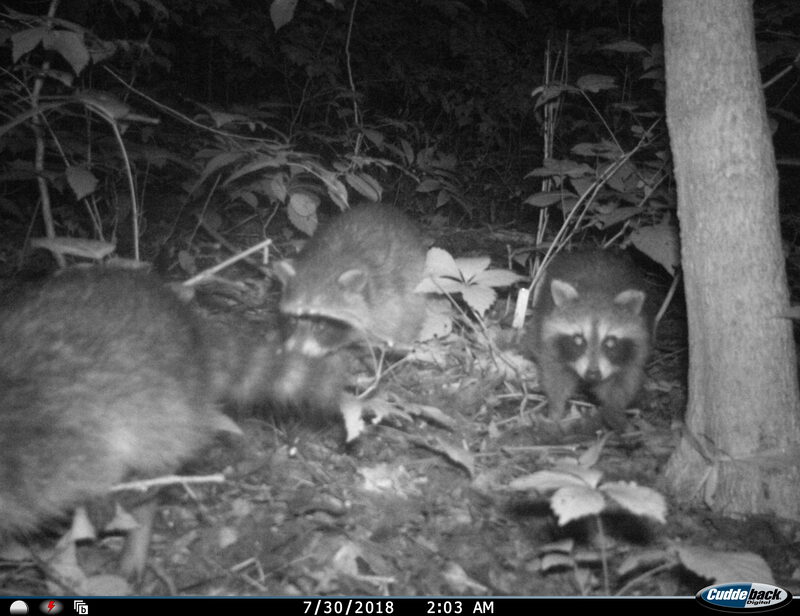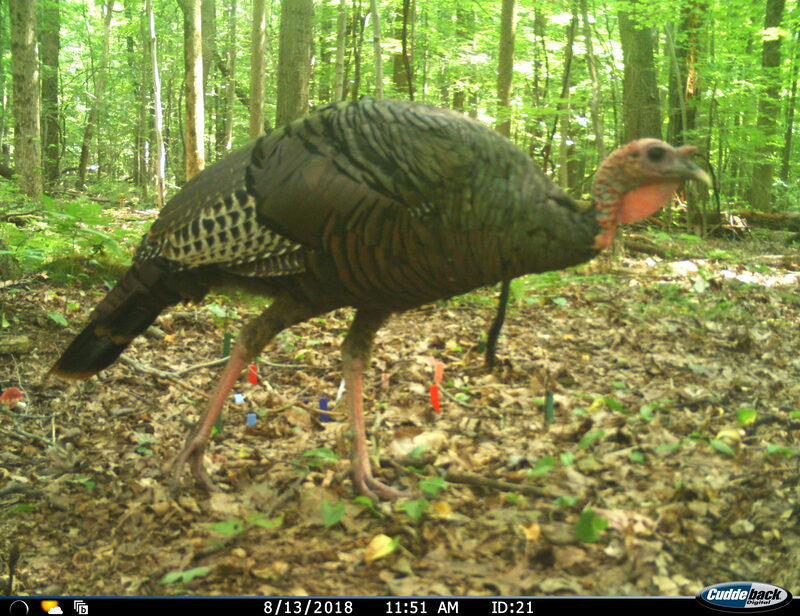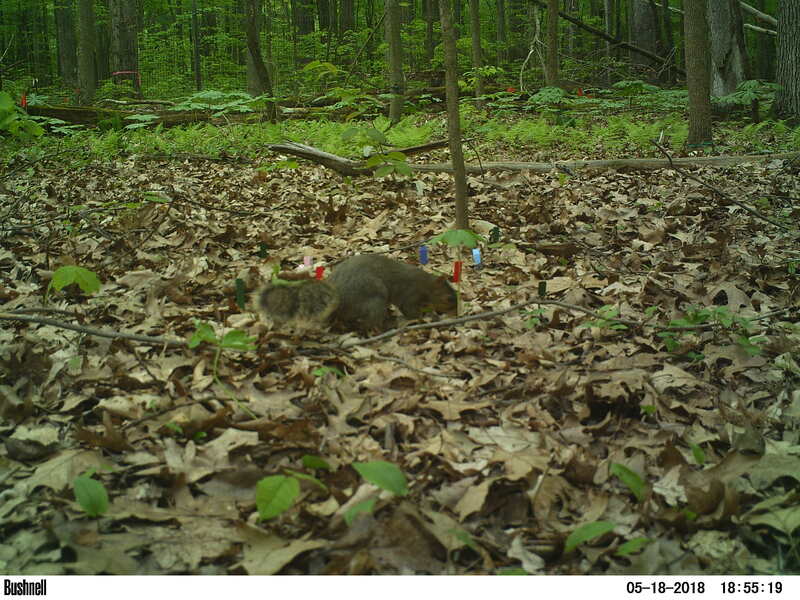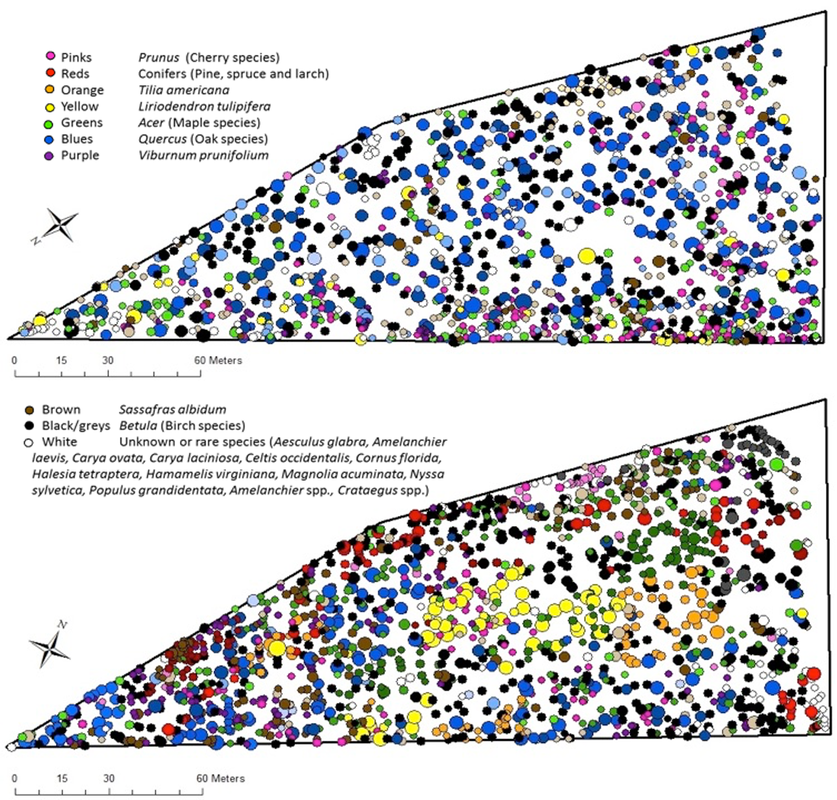Past projects
An ecosystem engineer in the Neotropics?
Direct and indirect effects of mammalian browsing on tropical forest succession
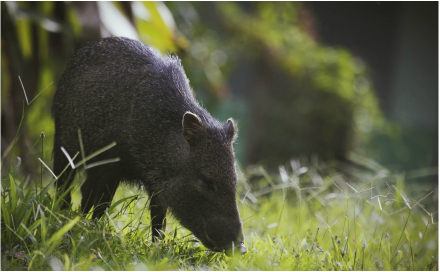 Collared peccary (Pecari tajacu) foraging in La Selva Biological Station, Costa Rica. Photo credit: Morgan Heim.
Collared peccary (Pecari tajacu) foraging in La Selva Biological Station, Costa Rica. Photo credit: Morgan Heim.
Direct and indirect effects of herbivory can cause landscape-scale restructuring of plant communites, yet the mechanisms underlying tropical plant regeneration remain elusive. I worked in several long-term experimental peccary exclosures in Costa Rica and Panama to test the overarching hypothesis that peccaries act as ecosystem engineers. I resurveyed understory vegetation in a subset of La Selva plots and found that peccary activity decreases seedling and sapling abundance, percent leaf cover, and height structure heterogeneity. I also visited exclosures on BCI and Gigante Peninsula in Panama to more fully explore mammalian effects on the seed-seedling and seedling-sapling transition, and the outcome of understory tree-liana-palm competition.
Project presentation: Spicer ME & Carson WP. “Direct and indirect effects of excluding mammals in a tropical wet forest: Evidence from Costa Rica for altered seedling recruitment success.” Ecological Society of America Annual Meeting, Baltimore, MD. 11 Aug 2015. Abstract.
Project presentation: Spicer ME & Carson WP. “Direct and indirect effects of excluding mammals in a tropical wet forest: Evidence from Costa Rica for altered seedling recruitment success.” Ecological Society of America Annual Meeting, Baltimore, MD. 11 Aug 2015. Abstract.
Where have all the wildflowers gone?
How legacy effects of overbrowsing promote depauperate forests
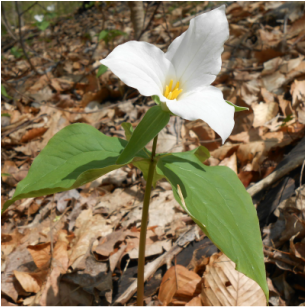 Trillium grandiflorum blooming inside a fenced area in Tryon-Weber Woods, Linesville, PA.
Trillium grandiflorum blooming inside a fenced area in Tryon-Weber Woods, Linesville, PA.
In eastern deciduous forests, a legacy of deer overbrowsing has replaced a diverse herbaceous understory with a recalcitrant layer of American beech (Fagus grandifolia) and maple (Acer spp.). In continuation of a long-term research project in northwestern Pennsylvania, I tested a mechanistic hypothesis for these depauperate understories: recalcitrant saplings limit wildflower density and diversity by reducing resource availability on the forest floor. To address this hypothesis, I monitored herbaceous and woody community response after removal of the recalcitrant sapling understory layer (beech and maple saplings) in existing deer exclosure plots and adjacent control plots. Preliminary results from the summer 2015-2018 field seasons (3-6 years after removal treatment) demonstrate strong shifts in herbaceous and woody community composition with removal and deer treatments, and increases in herbaceous diversity with recalcitrant understory removals.
I was also interested in the direct effects of seed predators on recruitment success in the understory, so used motion-sensor camera traps and experimental seed additions to figure out who was removing propagules from the understory. See the photos below for some answers.
Project presentations:
Spicer ME. “Teasing apart the ghost of herbivory past: Why are there long-term delays in the recovery of forest understory communities?” Pymatuning Laboratory of Ecology Summer Seminar Series, Linesville, PA. 2 Jul 2018.
*Jasiewicz, A, Spicer ME, Wolf L, and Carson WP. "Testing the indirect effects of overbrowsing on seed predation." University of Pittsburgh Undergraduate Research Symposium. *Poster presented by undergraduate mentee.
Spicer ME. “A triad of trouble for northeastern forest communities: Testing the combined effects of overbrowsing, woody competitors, and propagule limitation on herbaceous plant diversity and reproduction.” Pymatuning Laboratory of Ecology Summer Seminar Series, Linesville, PA. 27 Jul 2016.
Spicer ME, Pendergast IV TH, & Carson WP. “The legacy of deer overabundance: Long term delays in herbaceous community recovery.” The Northeast Natural History Conference, Springfield, MA. 23 Apr 2016. Abstract.
Spicer ME. “Teasing apart the ghost of herbivory past: Why are there long-term delays in the recovery of forest understory communities?” Pymatuning Laboratory of Ecology Summer Seminar Series, Linesville, PA. 2 Jul 2018.
*Jasiewicz, A, Spicer ME, Wolf L, and Carson WP. "Testing the indirect effects of overbrowsing on seed predation." University of Pittsburgh Undergraduate Research Symposium. *Poster presented by undergraduate mentee.
Spicer ME. “A triad of trouble for northeastern forest communities: Testing the combined effects of overbrowsing, woody competitors, and propagule limitation on herbaceous plant diversity and reproduction.” Pymatuning Laboratory of Ecology Summer Seminar Series, Linesville, PA. 27 Jul 2016.
Spicer ME, Pendergast IV TH, & Carson WP. “The legacy of deer overabundance: Long term delays in herbaceous community recovery.” The Northeast Natural History Conference, Springfield, MA. 23 Apr 2016. Abstract.
How does bacterial load affect spider mating behavior?
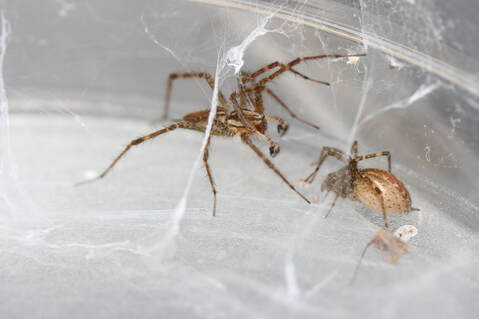 Male and female Agelenopsis pennsylvanica spiders engaging in a courtship ritual during the experiment at the University of Pittsburgh.
Male and female Agelenopsis pennsylvanica spiders engaging in a courtship ritual during the experiment at the University of Pittsburgh.
In collaboration with the Keiser and Pruitt labs, I experimentally tested how bacteria can shift the mating behaviors of spiders.
Project publication: Spicer ME, Pruitt, JN, & Keiser, CN. (2019). Spiders, microbes and sex: Bacterial exposure on copulatory organs alters mating behaviour in funnel-web spiders. Ethology, 125(10), 677–685. PDF.
Popular press coverage: “Microbes can change how spiders mate: scientists show that bacteria have unexpected effects in spider sex.” Interview for Insider Science. Rodrigo Pérez Ortega. 20 Aug 2019. Article.
Project publication: Spicer ME, Pruitt, JN, & Keiser, CN. (2019). Spiders, microbes and sex: Bacterial exposure on copulatory organs alters mating behaviour in funnel-web spiders. Ethology, 125(10), 677–685. PDF.
Popular press coverage: “Microbes can change how spiders mate: scientists show that bacteria have unexpected effects in spider sex.” Interview for Insider Science. Rodrigo Pérez Ortega. 20 Aug 2019. Article.
Effects of temperature on the foraging behaviors of tropical canopy ants
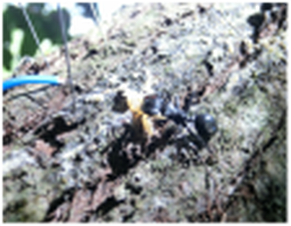 Ant foraging in experimental trial on BCI, Panama.
Ant foraging in experimental trial on BCI, Panama.
In collaboration with the Yanoviak lab, I worked on an ant behavior field experiment on BCI, Panama, to understand ectothermic adaptations to variable thermal microclimates. We used field and lab experiments to test how foraging behavior of several species of tropical canopy ants changed across various heat and light regimes.
Project publication:
Spicer ME, Stark AY, Adams BJ, *Kneale R, Kaspari M, & Yanoviak SP. 2017. “Thermal constraints on foraging of tropical canopy ants.” Oecologia: 183 (4).
Project publication:
Spicer ME, Stark AY, Adams BJ, *Kneale R, Kaspari M, & Yanoviak SP. 2017. “Thermal constraints on foraging of tropical canopy ants.” Oecologia: 183 (4).
In the forgotten forest
For my Masters research, I studied forest succession in the Lehigh University Experimental Forest with Bob Booth. We reconstructed the history of a planted forest rediscovered after 100 years, and compared that to a nearby unplanted reference forest. The legacy of the planting was very clear even after a century, and some species did a lot better than others.
https://intheforgottenforest.wordpress.com
https://intheforgottenforest.wordpress.com
